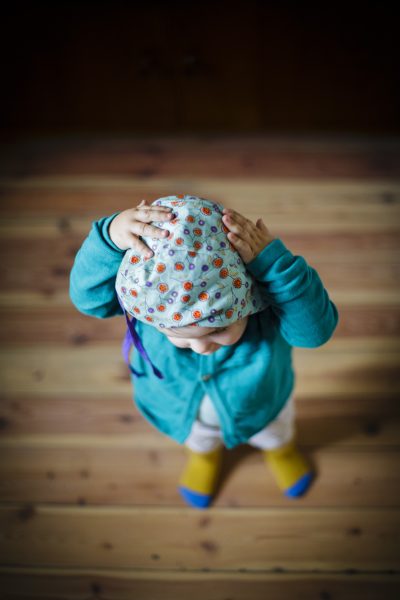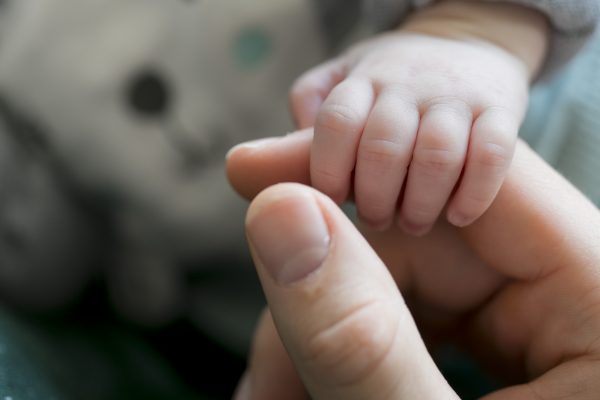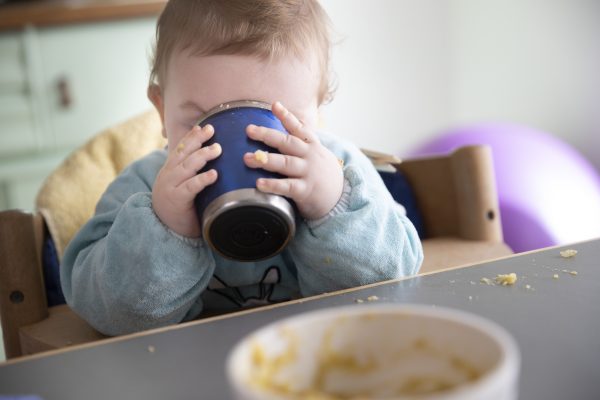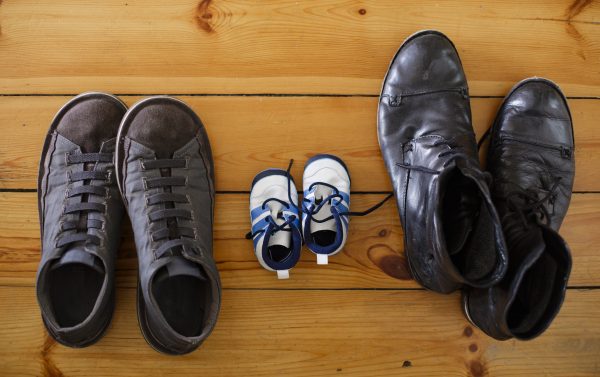What would it have looked like to have attended a US high school thirty years ago? This question is on the minds of many on the web right now. Under the hashtag #yearbookchallenge circulate on TikTok and Instagram numerous photos in the style of yearbook portraits from the 1990s. Behind the viral trend is a paid AI app.
In the Yearbook Challenge, users create photos of themselves in the style of an American yearbook from the 1990s using the app Epik – AI Photo Editor. The app uses artificial intelligence to rejuvenate the face and add different hairstyles, clothes and accessories. A challenge becomes who mixes his real yearbook photo under the new pictures and asks the followers which one is the original. Both celebrities and many influencers have already taken part in the trend.
“Just graduated from high school for $6.99! What do you think of the photos?”. The allure of transforming yourself into an American high school teenager is tied to all the myths and dreams surrounding a school days in the US. Teenagers enjoy using AI apps to edit their own selfies so that they look like something out of a high school series. In addition, it is exciting for them to receive photos that look similar to the pictures from their parents’ youth. Many young people also emulate their role models on social media and want to get in on the current trend as well.
Several selfies are needed for photo editing. The South Korean app developer SNOW is behind the app Epik. Anyone who uploads photos agrees that they will be stored and processed by the app. In addition, personal data must be entered in the app. The AI-generated photos borrow heavily from gender stereotypes such as poses and clothing, and beauty ideals such as smooth skin and symmetrical faces. The AI app erases irregularities of the original images altogether. Full body photos in particular are greatly altered by making them slimmer. Similar to the use of face filters, participating in the Yearbook Challenge can lead to distorted self-perception and unhealthy comparison to supposedly perfect bodies of others.
If your child would like to participate in the Yearbook Challenge, here are some things to keep in mind:
The app can be fun and creative way to see yourself in different roles and ages. Why not try out different AI image generators together and talk about the results?
Snapchat ist ein kostenfreier Messenger zum Versenden von Fotos und kurzen Videos. Die Besonderheit: Das lustige Selfie mit den Hasenohren oder ähnliche Bilder „verschwinden“ nach kurzer Zeit vom Bildschirm des Empfängers.
Mit Snapchat können Fotos und kurze Videos als Nachricht oder als Story an Kontakte versendet werden. Diese Snaps, also Schnappschüsse, sind nur für bis zu 24 Stunden sichtbar und „zerstören“ sich danach selbst. Die Fotos und Videos können mit unzähligen Filtern bearbeitet werden. Mit der „Memorys-Funktion“ können Nutzerinnen bestimmte Inhalte abspeichern. Neben den privaten Storys von Freunden gibt es Inhalte von Stars und Marken. Über die Funktion „Spotlight” lassen sich außerdem kreative Kurzvideos im TikTok-Stil veröffentlichen. Userinnen können über sogenannte „Snap Codes“ sowie über ihre Handynummer gefunden werden, wenn dies in den Einstellungen aktiviert ist. Das eigene Profil enthält nur Bilder und Videos, andere persönliche Angaben werden nicht gemacht. Mit der Kartenfunktion „Snap Map“ kann man sehen, wo sich die eigenen Kontakte gerade aufhalten.
Wer Snapchat nutzt, ist seit Februar 2023 automatisch mit dem Chatbot My AI befreundet. Dahinter steckt eine künstliche Intelligenz, die Fragen beantwortet, chattet und insgesamt wie ein „echter“ Freund daherkommt. Für die Nutzerinnen kann das ein nettes Spielzeug sein – ist jedoch auch mit Vorsicht zu genießen. Löschen lässt sich der Chatbot nur sehr umständlich und mit einem kostenpflichtigen Snapchat+-Abonnement.
Snapchat+ bietet für 4,49 Euro/Monat die Premium-Version, dort testen die Anbieter noch nicht veröffentlichte Features. Besonders für Kinder und Jugendliche ist das reizvoll: Es gibt mehr Optionen, den eigenen Avatar (genannt „BitMoji“) zu gestalten, und mehr Informationen über Freundeskonstellationen als mit einem regulären Snapchat-Konto.
Die App gehört zu den beliebtesten Anwendungen bei Jugendlichen ab 13 Jahren. Teenager nutzen Snapchat sehr gern, um sich mit ihren Freundinnen auszutauschen. Dazu werden statt Text einfach Bilder und Videos versendet. Die Nutzung der Spaßfilter, Videos, die mit Musik unterlegt werden können, und selbst verschwindende Nachrichten machen den Reiz der App aus. Snapchat wirkt jugendlicher und verspielter als z. B. Instagram. Die Kommunikation erscheint Jugendlichen privater, da nur mit einzelnen oder in Gruppen Inhalte ausgetauscht werden. Auf der „Snap Map“ werden Personen als Avatare dargestellt, weshalb sie wie ein Spiel wirkt.
Alle Inhalte auf Snapchat zerstören sich nicht wirklich selbst, sondern sie lassen sich nach einer bestimmten Zeit nur nicht mehr aufrufen. Mit etwas technischem Know-how sind sie auf dem Gerät wiederherzustellen. Oder es wird einfach ein Screenshot gemacht – darüber wird der Versender des Bildes allerdings informiert. Trotzdem kann es problematisch werden, wenn Kinder und Jugendliche sehr persönliche – vielleicht sogar intime – Bilder und Videos von sich versenden und diese z. B. über Cybermobbing gegen sie verwendet werden. Durch die Vielzahl der versendeten Inhalte ist die Kontrolle darüber schwierig. Kinder und Jugendliche sollten daher genau wissen, wie sie die Melde- und Blockierfunktionen nutzen können. Das ist im Falle der unerwünschten Kontaktaufnahme besonders sinnvoll. Unter anderem deswegen ist auch die Funktion „Snap Map” kritisch zu sehen. Denn jedes Mal, wenn man Snapchat öffnet, wird auch die Snap Map aktualisiert. Und aus diesen Informationen lassen sich ziemlich viele Schlüsse ziehen wie Adresse, Schule oder Hobbys; auch von eher unbekannten Online-Freunden. Auch aus diesem Grund ist es wichtig, sich gut zu überlegen, wen man in den eigenen Kontakten aufnimmt.
Auch bestimmte Inhalte können für Jugendliche problematisch sein. Dazu zählen nicht altersgemäße Bilder ebenso wie unangemessene Werbung oder Snaps von Marken und Produkten.
Nutzende müssen sich an die Regeln der Plattform Snap halten. Die Nutzung von Snapchat ist Jugendlichen ab 13 Jahren nur mit der Erlaubnis ihrer Eltern gestattet. Es erfolgt allerdings keine technische Prüfung der Altersangabe.
Generell ist es verboten, nicht jugendfreie Inhalte, wie z. B. pornografische Bilder, zu verbreiten oder zu bewerben. Minderjährige dürfen keine Nacktbilder oder sexuell aufreizende Inhalte von sich posten oder versenden. Sicherheitsprobleme können innerhalb des deutschsprachigen Sicherheitscenters des Dienstes gemeldet werden. Außerdem ist es möglich, andere Nutzende zu blockieren und zu melden. Sogenannte Content-Manager prüfen Verstöße gegen die Snapchat-Richtlinien.
Snapchat sammelt jede Menge Daten von seinen Nutzern und erläutert das sehr offen in seinen Datenschutzbestimmungen – auch, dass Daten teilweise an Dritte weitergegeben werden. Die Daten, die man über Snapchat versendet, werden bei der Übertragung verschlüsselt. Über das Family Center können Eltern in der App verschiedene Kontrollfunktionen nutzen.
Über das Family Center von Snapchat erhalten Eltern Möglichkeiten über Kontrollfunktionen, z.B. einen Überblick zu den Aktivitäten ihres Kindes oder die Einrichtung von Inhaltskontrollen in der App. Um sich mit dem Konto des Kindes zu verbinden, wird allerdings ein eigener Snapchat-Account benötigt. Jugendliche müssen der Verbindung auch selbst zustimmen.
Wenn Ihr Kind die App gern nutzen möchte, sollten Sie unbedingt über mögliche Gefahren sprechen. Regeln Sie, wer die geteilten Inhalte sehen kann und wer nicht. Gehen Sie gemeinsam die Einstellungen durch. Erklären Sie Ihrem Kind, dass versendete Bilder per Screenshot vom Empfänger abgespeichert werden können. Es ist dringend zu empfehlen, dass Jugendliche nur Freundinnen und Freunde zu ihrer Liste hinzufügen, die sie tatsächlich kennen. Eine gute Übersicht zum sicheren Umgang mit Snapchat bietet Jugendlichen das Angebot Handysektor.
Sprechen Sie über die Funktion Snap Map: Was bedeutet die Sichtbarmachung des eigenen Standorts, welche Folgen und Risiken gehen damit einher und wird die Funktion überhaupt gebraucht? Das Teilen des Standortes kann auch unbewusst passieren (beim Öffnen der App). Dies kann im sogenannten „Geistmodus“ (Ghost Mode) verhindert werden. Auch kann der App die Berechtigung entzogen werden, auf den Standort zuzugreifen. Wenn eine Freundin Ihres Kindes Snapchat+ nutzt, sollte besonders darauf geachtet werden, die Tracking-Funktion zu deaktivieren oder die Person zu blockieren.
There are many ways to do small media projects with kids. Especially uncomplicated are projects around photography. Because there is actually a camera in every family, whether in the smartphone or as its own device. Plus, you don’t have to depend on the Internet or a power outlet (when the battery is charged) to take photos. So some ideas can also be implemented quite easily outside! What kind of camera you use for a small photo project, whether photo camera, smartphone or tablet does not matter in most cases. You can get creative together with your child and try out what can be photographed besides selfies and vacation snapshots – with the photo camera on the go.
Anyone who takes photos themselves knows that the view through the camera lens is often a different one. When photographing, perspectives and proportions change completely. Go on a journey of discovery with your child. Macro photography, for example, is particularly well suited for this. That is, you get very close to objects. If available, you can also use the zoom of the camera to help you. Flowers, insects and other things look much bigger with it. This way, you can discover things together that you didn’t consider before. No less exciting is taking photos from a great distance or height. You can go in search of the best places to take pictures.
You may know this photo action from your vacation in Paris or Pisa. Photos are taken there that look as if the leaning tower is being propped up or the Eiffel Tower is being gently held between index finger and thumb.
The technique is called forced perspective. This allows you to make objects appear larger or smaller than they actually are by positioning yourself at a certain distance. This often results in funny photos that do not correspond to reality.
Such perspective photos can be easily implemented at home or outside, because any building or object can be forced into funny and crazy perspectives. Just try it out with your kids – “play” with different perspectives.
For a fun YouTube video to get inspired, click here:
Do you still know the photo love stories from Bravo? Behind it is the simple comic principle, combining images and short texts. Photos always tell stories and children love stories. Think up a little story together and package it as a photo story. This way, children can also try out their acting talent. It is even easier to create collages on a specific theme, such as “animals” or “nature”. With various apps, you can easily edit, arrange images and add text. Among other things, “Pic’s Art Photo and Collage” and “Edit Pic Collage Photo” let you edit pictures, create collages and insert stickers. “Snapseed”, on the other hand, relies on filters and correcting sharpness and contrast.
If your child has taken particularly successful photos, he or she can present them to other children in a children’s photo community such as Knipsclub or Kamerakinder. While on Instagram and the like, it’s usually the shining filter, a virtual wreath of flowers on the head or the rushing sea in the background that leads to lots of likes, the Knipsclub or the camera kids are all about the essentials: taking photos. Many photo activities and the nomination of the “Photo of the Month” encourage people to participate and try things out. In the digital exhibition, images can be marked with “Like” and commented on. Children up to about 12 years old can exchange ideas with each other. A kids’ photo community is a safe place to try out social network options in a protected space before your child posts photos and more on Instagram and other social apps starting in their teens. Talk to your child about what kinds of photos they share and which ones may be nobody’s business.
Another great idea, for advanced photographers is painting with light, also called light painting. A guide on how to do this with children can be found at“Growing up well with media“.
Even more ideas and tips for photographing with children can also be found at Knipsclub and Kamerakindern.
Colorful animated characters, pets, flowers, soccer flags or a normal vacation photo. All this ends up as a profile picture on Facebook, Instagramand Co. A message like “…has updated its profile picture” is something that everyone on the social networks has certainly read before.
But why is the profile picture such an important part of the Internet presence for teenagers and for adults?
Profile pictures can help identify others on the Internet. For example, if your child has made new friends at school, they can check that the name matches the picture and that it is the right person. But profile pictures also offer opportunities to express yourself creatively and show what you like. This in turn helps others get the right impression of a person’s identity.
A profile picture is the first thing you see when you get a friend request or open Instagram. So the profile picture is comparable to the first impression in real life. But online communication lacks things like eye contact, posture, and tone of voice. They show what the interlocutor is like. The profile picture can do that a little bit online as well – for example, because a person can be seen up close and thus their facial expression, such as a smile.
With the profile picture, each person conveys their own messages. Whether it’s just the message, “I like cats,” because there’s a selfie with a cat, a posted image overlaid with filters, or the gray outline of a human. All this sends different messages to the viewer, according to which it is judged whether someone comes across as likeable or not. Similarly work the status on WhatsApp or the stories on Instagram.
This is precisely why it is important for many young people to have a “good” profile picture. This must fulfill certain functions for them: It should look professional, but still spontaneous, or it should be as close as possible to their own ideal of beauty. It can happen that teenagers change their profile picture every few weeks because they have taken a picture that they can identify with better and that sends the right message to their friends.
Teach your child that a profile picture is something that many people can see different things in and it depends a lot on who is looking at the picture. Not only friends, but also teachers or future colleagues at work could see the picture. Therefore, it should be considered beforehand how a profile picture could be understood before it is uploaded.
Profile pictures can also reveal things about a person that are none of other people’s business. Especially if a profile is not private, which means that even strangers can find and view the person on Instagram, Tik Tok, etc., neither the profile picture nor other information should reveal too private things about the person, such as the place of residence. Especially if your child is still inexperienced with social networks, you can first post a picture together that reveals little. This can even encourage creativity. A picture that shows only your child’s shoes or a shadow outline, for example, can still be individual and beautiful. At the same time, it is not clearly recognizable to strangers, so there is less risk of cybergrooming. The safest way is to always set profiles of children and teenagers to “private” so that only friends can see them!
It is exciting and beautiful to follow how your own child grows and develops. Thanks to smartphones, growing up can be permanently documented and shared with others. However, there are a few things you should keep in mind for the sake of your child. Answering the following questions will help you decide how to handle photos of your school-aged child.
Your child is probably used to being photographed from an early age. Maybe it likes it, but maybe not always and not in every situation. Be mindful of when and how you photograph your child, especially if you want to share the photo with others. When it comes to forwarding a photo, your child should also be okay with it. Think about whether you would have wanted certain photos of you as a child to circulate on the web.
Children should always be seen clothed in photos and not in a ridiculous or even embarrassing situation. If other children are visible in the photo, you must obtain their parents’ consent.
Consider whether it is always necessary to see your child’s face. We’ve put together some tips on how to take creative photos of children without being completely obvious about the child.
Children also have rights. They can and should have a say when it comes to themselves and their well-being. Photos on the web can violate children’s privacy. As a school child, your son or daughter is old enough to understand what it means when photos are shared on the Internet. Talk to him or her about it and don’t decide over his or her head. You should not publish a photo of your child without his or her consent!
If your child later takes and shares photos on their smartphone, they should know what the consequences can be. Educate your child in good time and, as a role model, handle the dissemination of photos sensitively yourself.
On the one hand, there is the question of the channel through which children’s photos can be shared and what permissions other people have to see these photos. There are platforms where children’s photos are collected from Facebook profiles, for example, and made available to others. Strangers can then use these photos for their own purposes – in the worst case, they are pedophiles.
The more people who can see your child’s photos, e.g. via the status function on WhatsApp, the more likely it is that they can simply be copied and forwarded and thus fall into the wrong hands. Therefore, use the privacy settings on the smartphone and in the respective app so that only a restricted circle can see the photos.
On the other hand, make absolutely sure that children’s photos are not published in combination with other information such as full name, place of residence etc. With the first photo on the web, your child gets a digital identity that becomes more and more pronounced over the years. Your child can’t undo that later.
If grandma and grandpa don’t live nearby, it’s nice for them to still get to see their grandchild grow up. It’s easy to do that with a photo via WhatsApp and the like. Nevertheless, you should agree on rules with family and friends when sharing photos via smartphone. You may consider settling on a messenger like Signal, where photos are not automatically saved to the recipient phone’s photo gallery. You may also agree not to share photos that show your child’s face at all, but only to show them in person.
New parents are especially proud of their own baby and would like to share their happiness with the whole world. But don’t lose sight of your child’s privacy rights . Answering the following questions will help you decide how to handle photos of your child.
Your child will only learn over time what photos are and what it means when images are shared online. Therefore, for the time being, you have to make the decision on how it should look like in photos and who is allowed to see certain images. Therefore, before you share a photo of your child that you find funny, for example, you should consider whether you would have liked it if your parents had shared such a picture of you.
Children should always be seen clothed in photos and not in a ridiculous or even embarrassing situation. If other children are visible in the photo, you must obtain the consent of their parents or legal guardians.
Photos of children can also be beautiful without showing them very clearly, e.g. by photographing them from behind or only showing a detail. For more tips on how to take and share beautiful children’s photos in a creative way without violating their privacy rights, see our post Creative Children’s Photos.
Also, think about the channels through which photos are distributed. When you post a picture on WhatsApp it can be forwarded easily and unnoticed, and may even end up in someone else’s hands. Then you don’t know what happens to it.
To avoid this, there are often various setting options in apps or on platforms that restrict visibility or the circle of recipients. Also regularly check your own privacy and security settings! Be sure to avoid posting a photo of your child in combination with exact details such as name or location.
The fact that you want to capture beautiful moments with your child and share them with others is quite normal and brings joy. But not every photo has to be shared or published on the Internet. It can be just as nice to show the pictures at the family gathering and enjoy them together. Discuss with family and friends how you would like photos of your child to be handled. (You can find suggestions for this at the German Children’s Fund, for example.) Because once photos have been sent via WhatsApp or other messengers, they can be forwarded easily and unnoticed. Tip: With messenger apps like Signal or Telegram photos are not automatically saved in the recipient’s photo gallery!
Discuss this with your partner or the other parent. But children also have a right to co-determination, privacy and to decide what happens to pictures of them. That’s why you should involve your child as early as possible. If it is still very young, you can ask if it likes itself in the photo before forwarding it. From kindergarten age, you should ask more precisely, e.g. whether grandma and grandpa are also allowed to see and have a picture. Respect your child’s decision, even if it is not your opinion.
Every day we experience unforgettable moments with our children: the first steps, the costume party with the best friends or the first trip to the zoo. Of course, we want to capture them and share them with others.
We should be aware of the way in which photos of our children circulate on the internet — whether on WhatsApp, Instagram, or otherwise on the net. After all, children also have a right to privacy and should be able to participate in decisions about what and how much of them can be seen on the internet, in line with their age.
Those who like to post photos of their loved ones should make sure that the face, surroundings and names are not clearly recognizable. We have collected a few creative ideas to still get beautiful and impressive photos:

Copyright: Thomas Trutschel/photothek.net
Be creative about the camera’s angle of view. A child’s photo from behind, above or below can also be adorable!
If you change the perspective, it can emphasize the image effect. Often it is enough to stand on a stair step or a kitchen chair. However, make sure that your child’s face is not recognizable.
When you go to the child’s eye level, the background looks much more exciting and the viewer gets the feeling of seeing the world from the child’s point of view.

Copyright: Ute Grabowsky/photothek.net
Sometimes we get so busy trying to get everything in one picture at once that we overlook the little things altogether. Details can also tell a story and have an emotional impact.

Copyright: Ute Grabowsky/photothek.net
Interesting and creative photos can also be taken by shooting through other objects (e.g. leaves, fabrics, etc.) or working with water reflection, great puddle photos can be taken and the little ones have fun too!

Copyright: Thomas Koehler/photothek.net
When you work with light and shadow, some photos look mysterious and exciting and others very artistic. Their advantage is that only silhouettes and no faces are visible.

Image: photothek.de
You may be familiar with photos of children where the faces have been covered up with emojis after the fact. If you already remember when taking the photo that you don’t want children’s faces to be seen, you can cover them up in another way. Sometimes such photos are not intended at all and look natural, for example, when the child just holds his hands or an object in front of his face – as in our example.

Copyright: Thomas Trutschel/photothek.net
Things can also tell stories, especially when you realize they have a connection to a person – like the shoes in our example photo.
Some of the effects mentioned can also be achieved by post-processing photos. For example, you can work with high contrasts and strong backlighting or play with depth of field. When creating a photo collage, images are sometimes displayed so small that the faces are no longer recognizable.
Involve your child as early as possible. Many children are used to being photographed. And looking at photos together on the smartphone is part of everyday family life for many. It is therefore a good idea to talk about the publication of photos on the internet at an early stage in a way that is appropriate for children. As early as elementary school age, children can discuss what the internet is and what it means when photos are published on the Net.
Whether and how much you or your child disclose about yourself on the internet is up to you. Above all, it is important to deal with the topic. Both parents and children should be aware of the consequences of posting pictures of themselves and others on the internet. Our article on children’s photos on the internet can serve as a stimulus for a joint discussion.
When one’s child grows up and lives relationship, sexting also occurs. Media educator Björn Schreiber explains what this is and what your child should be aware of.
Viktoria wonders when her daughter should actually start posting photos of herself and her everyday life on the internet and what she should bear in mind. Lidia de Reese provides important tips and advice.